June 1918 Dated -Saint-Mihiel Offensive - A.E.F. Used French Artillery Map - "Nomeny - A" - 1st Lieut.. E. V. McKey Jr. - 134th Field Artillery
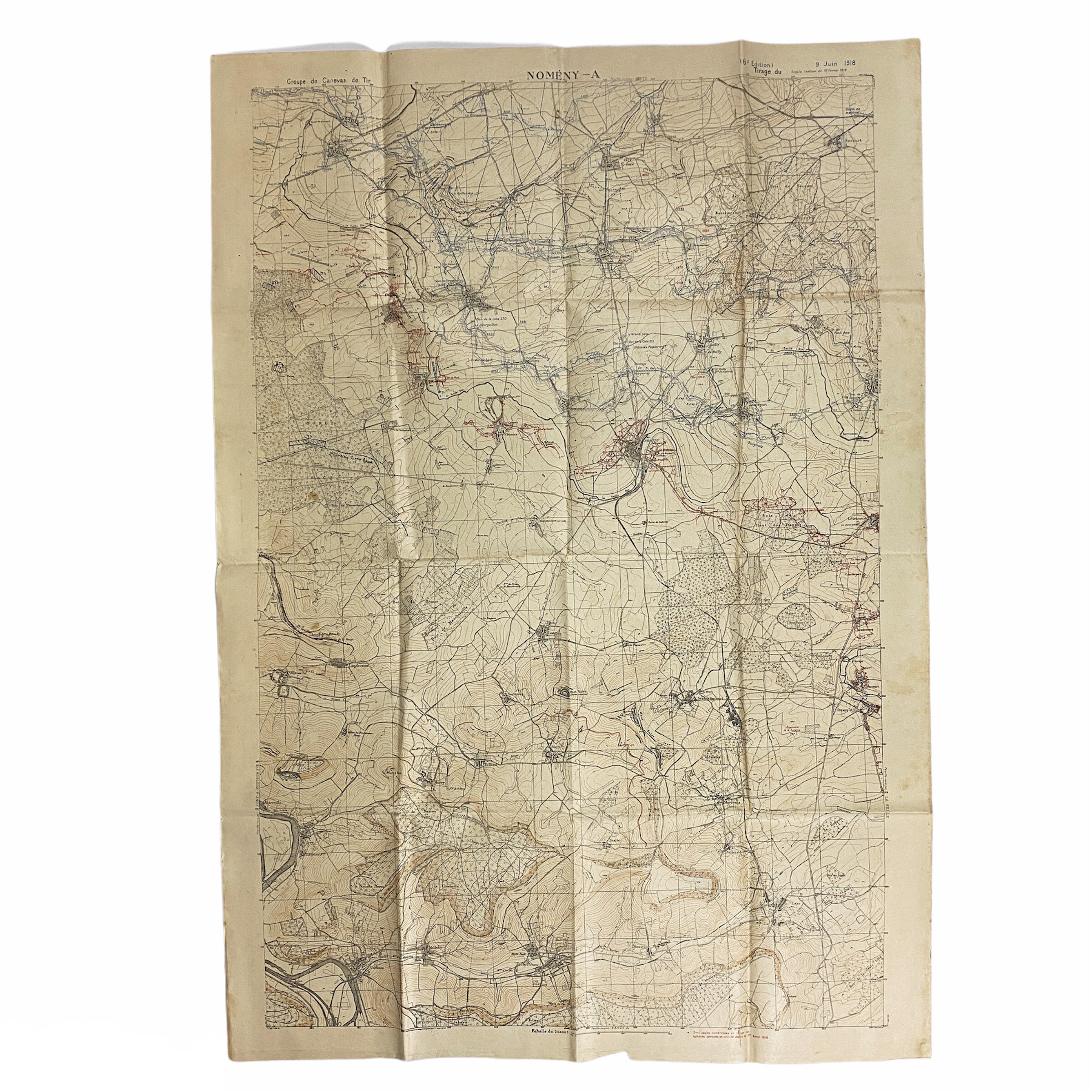
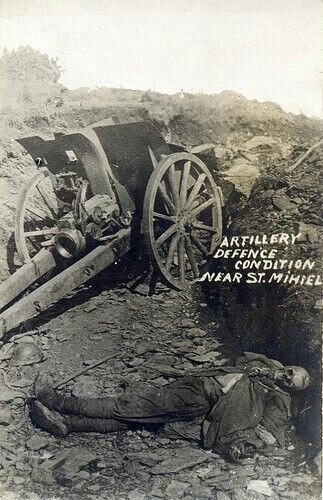
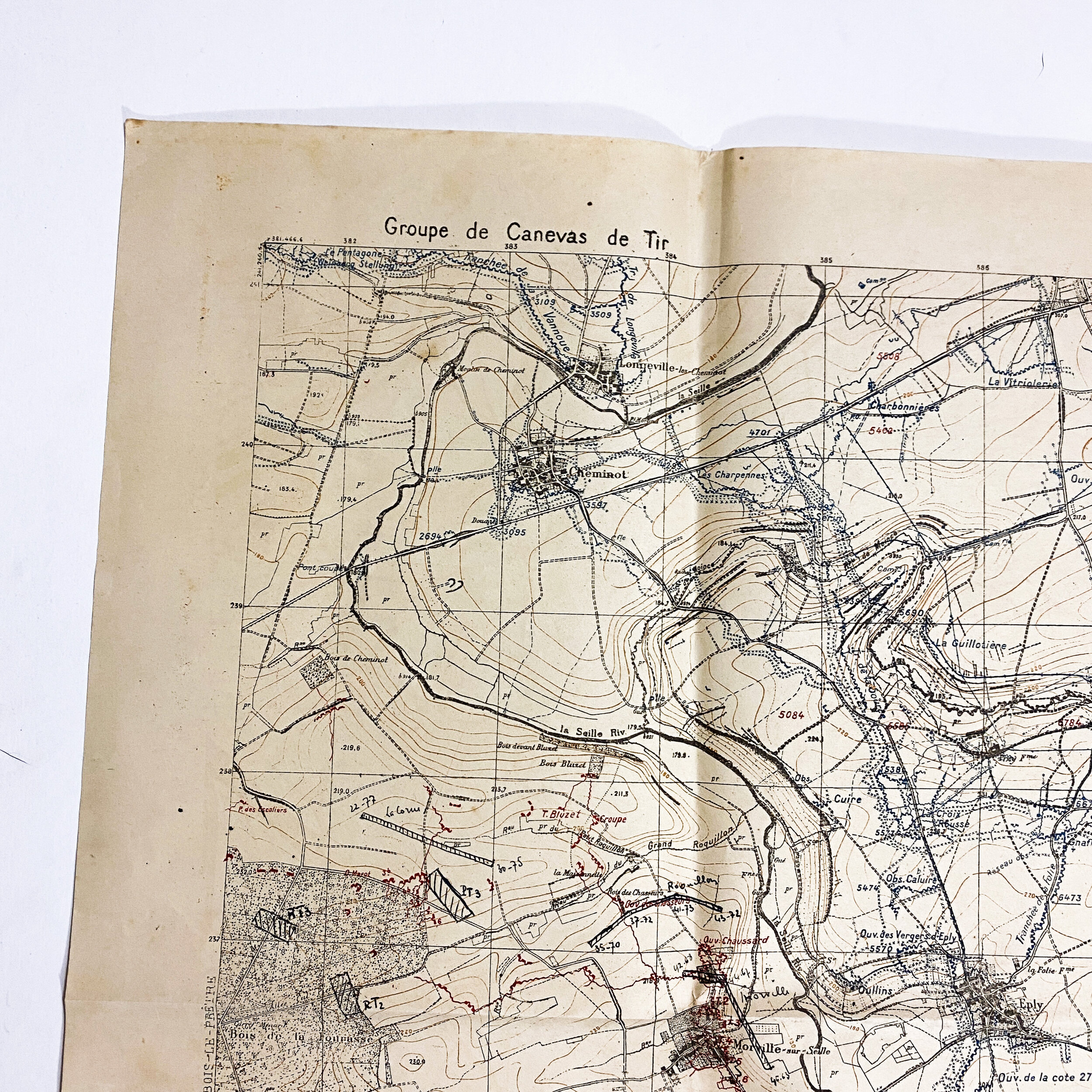
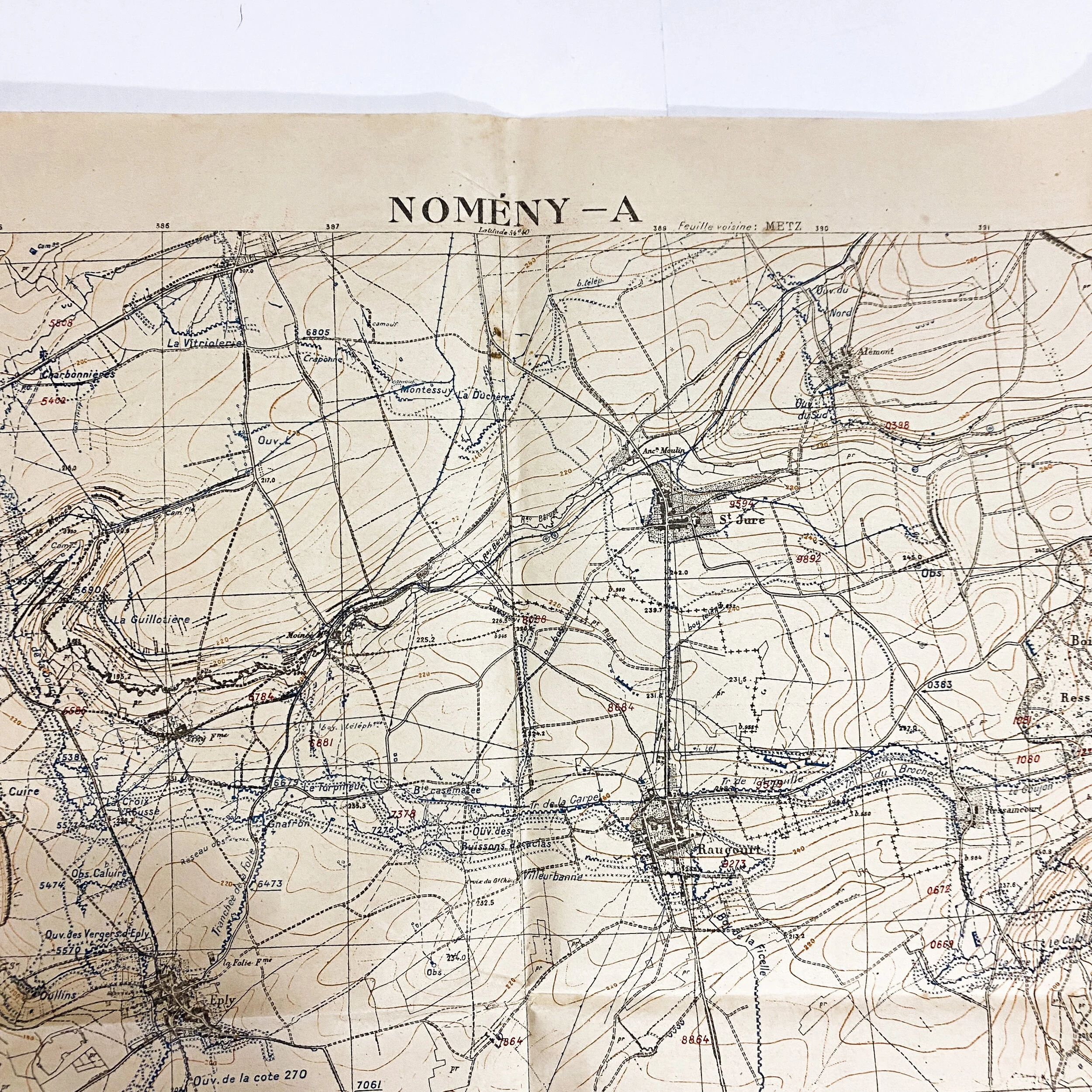
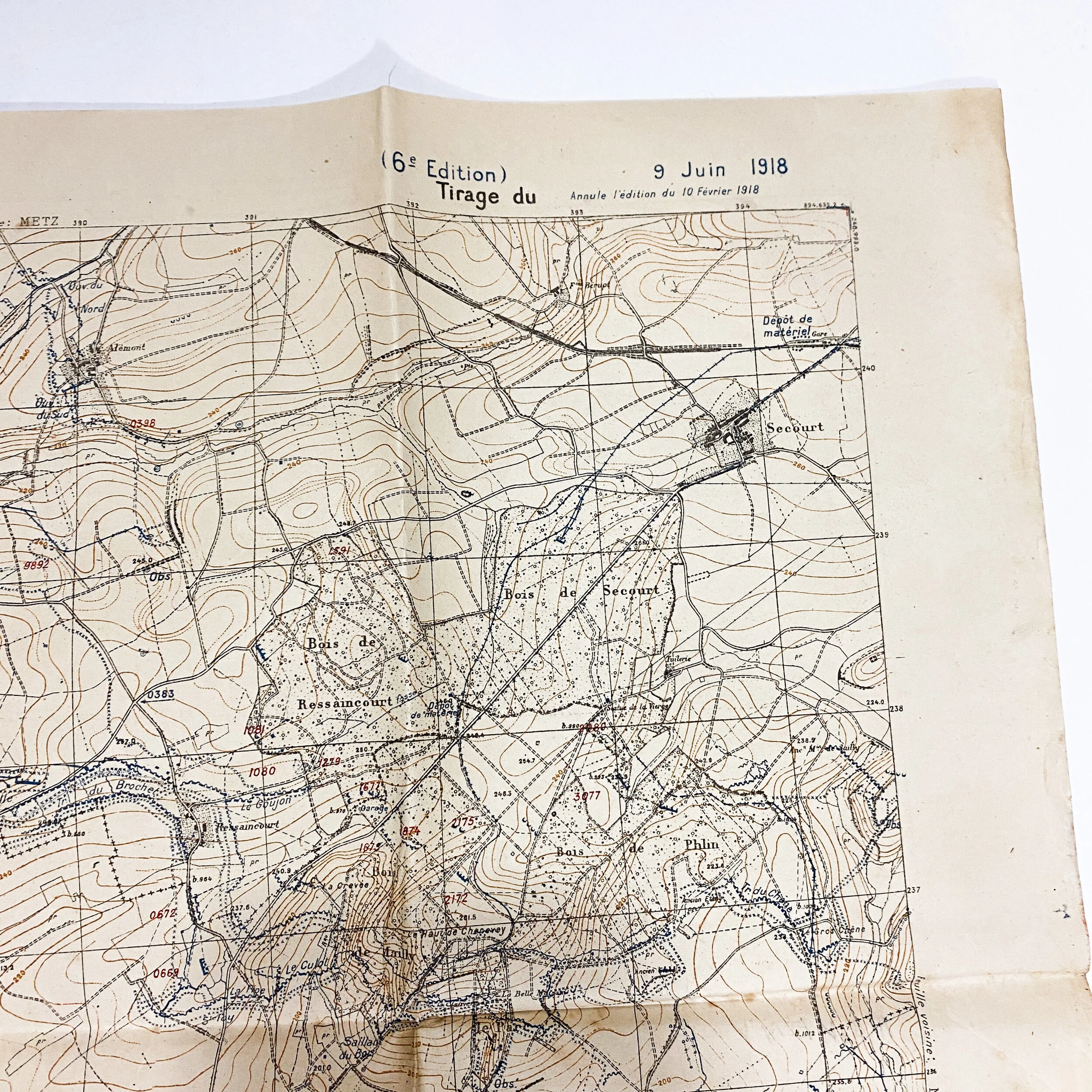



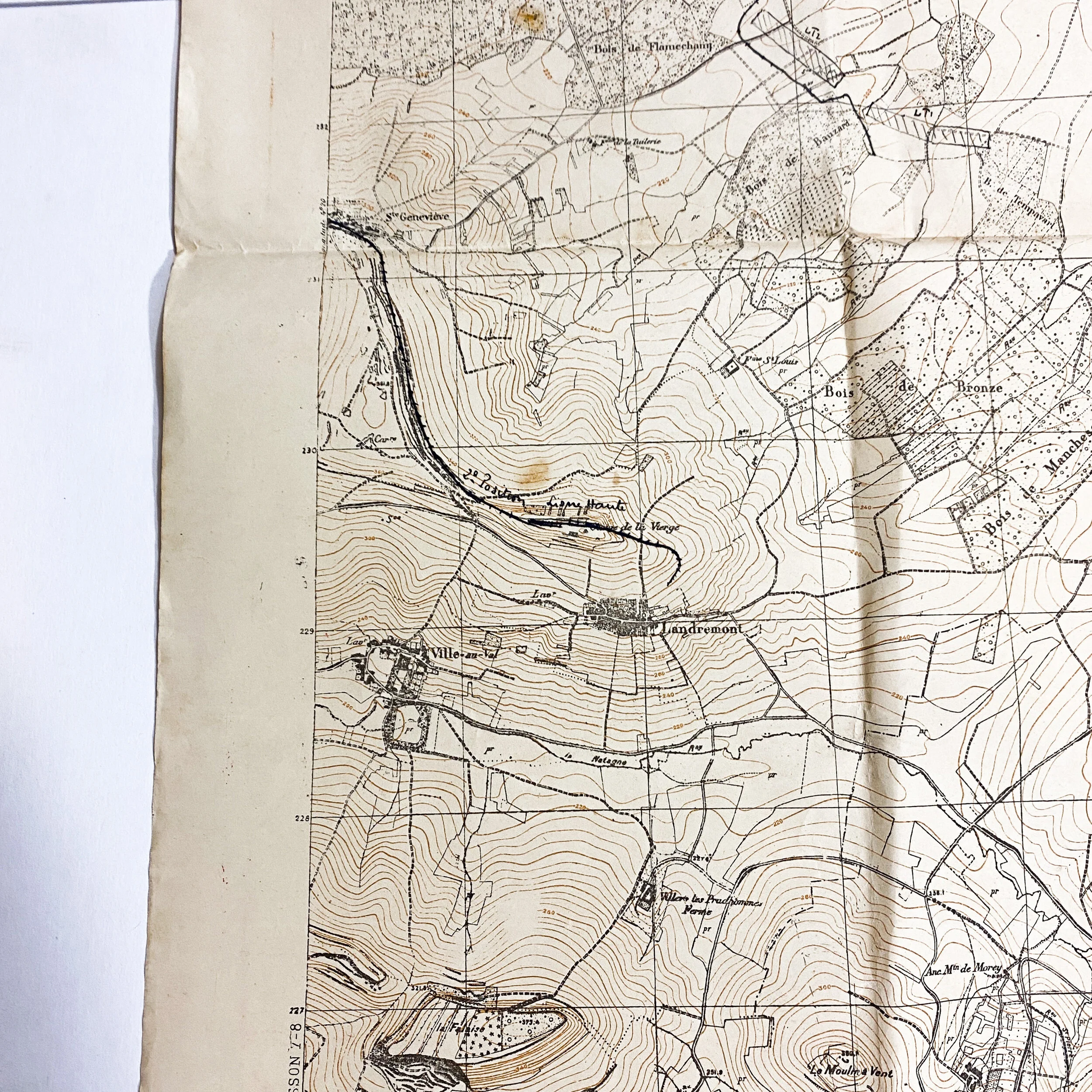

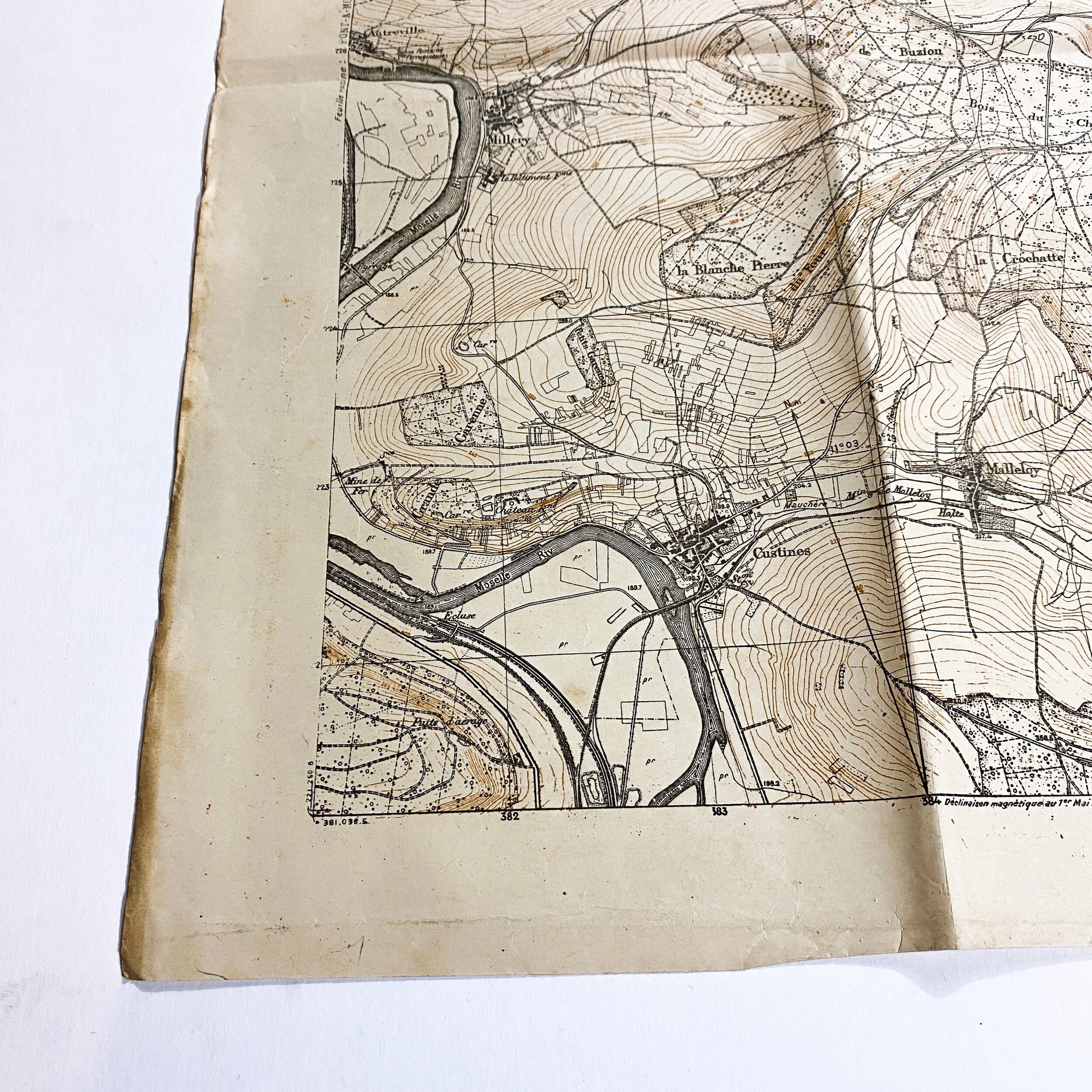


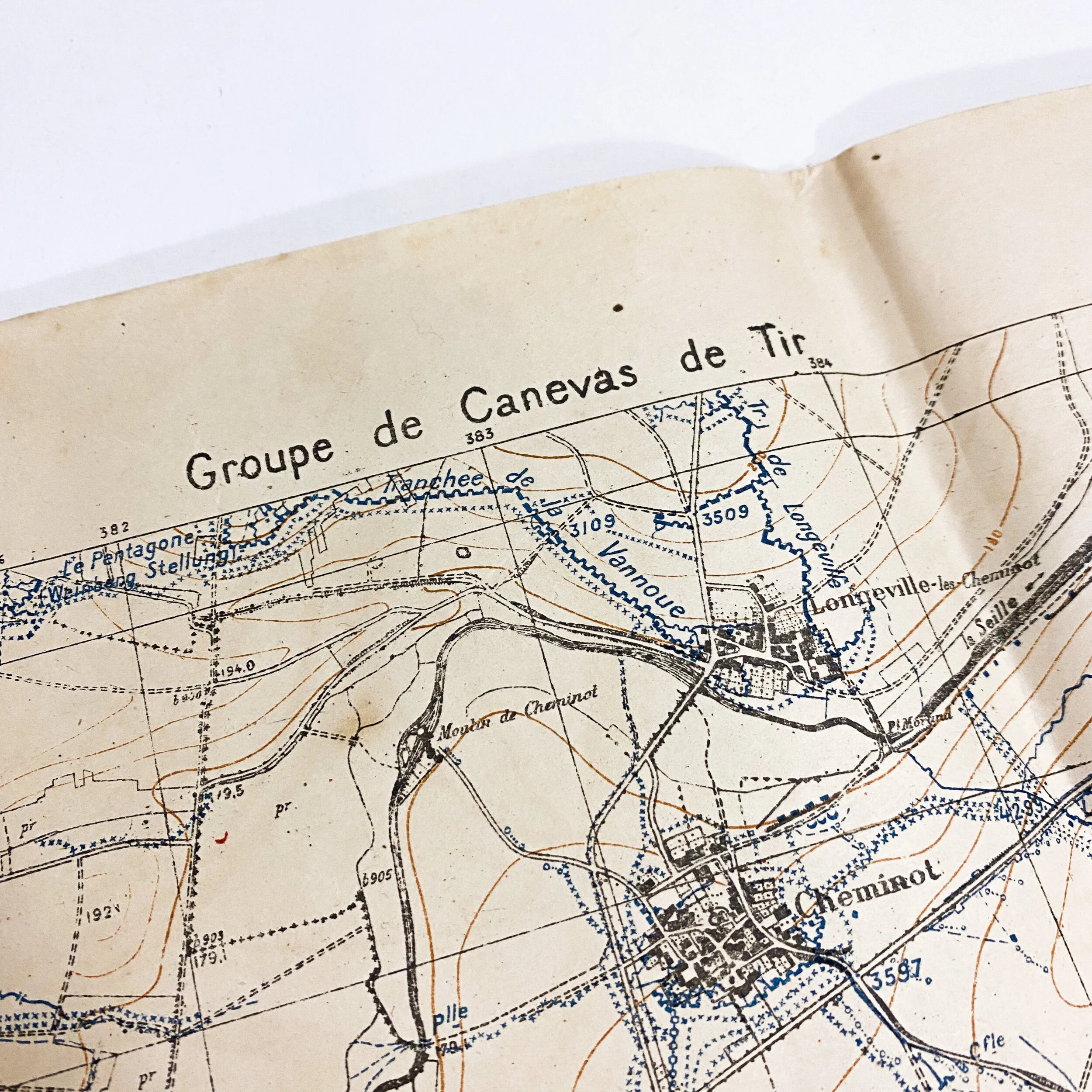
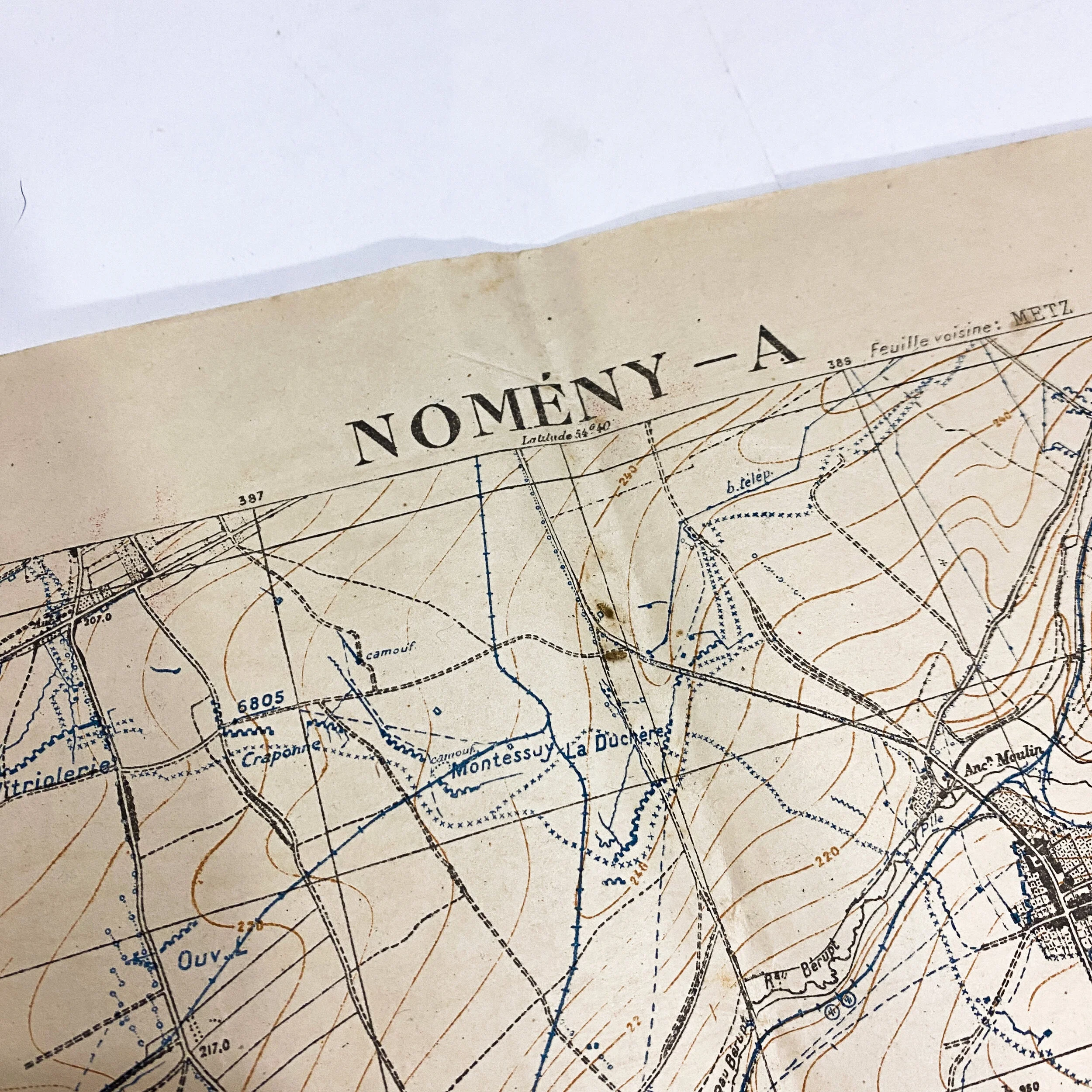
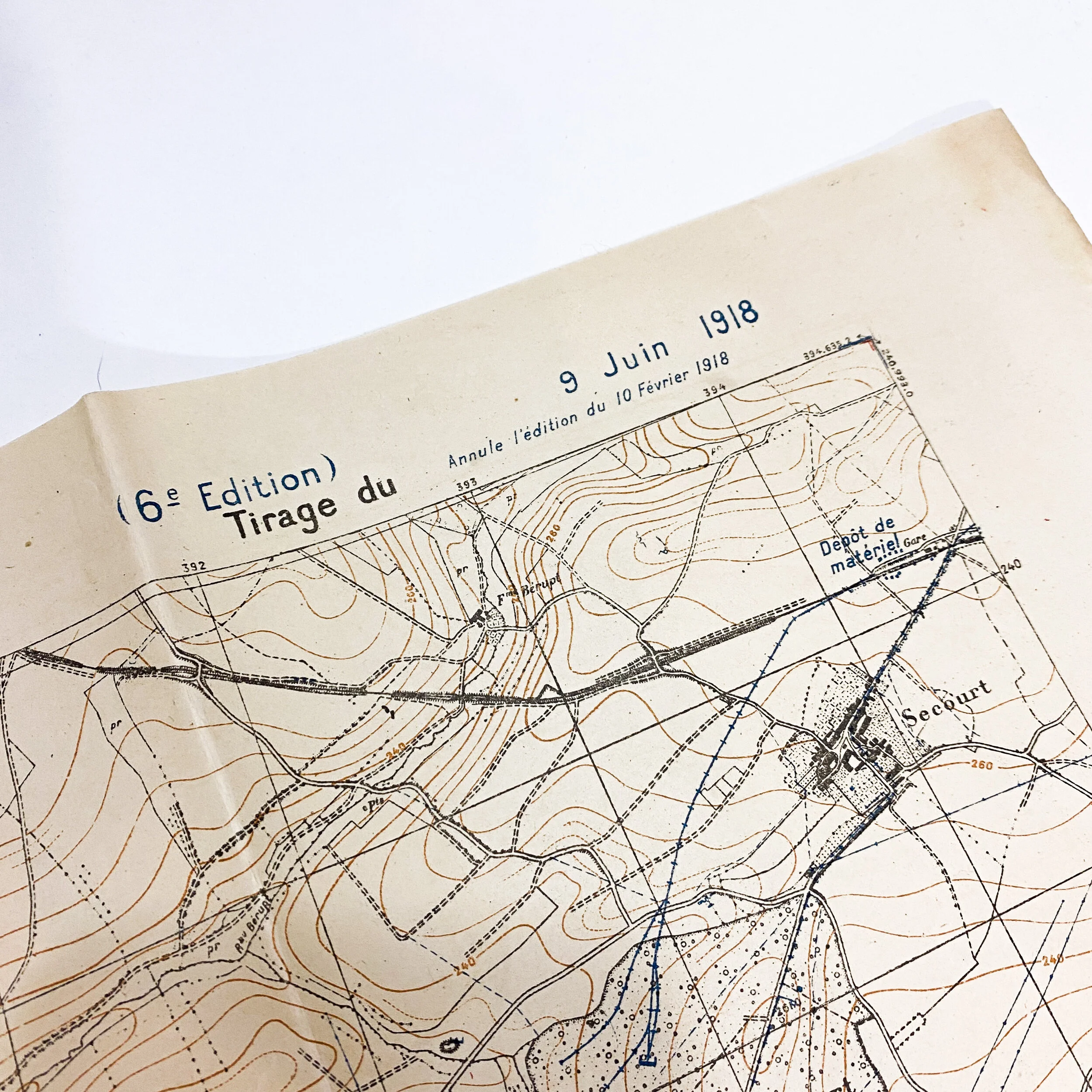


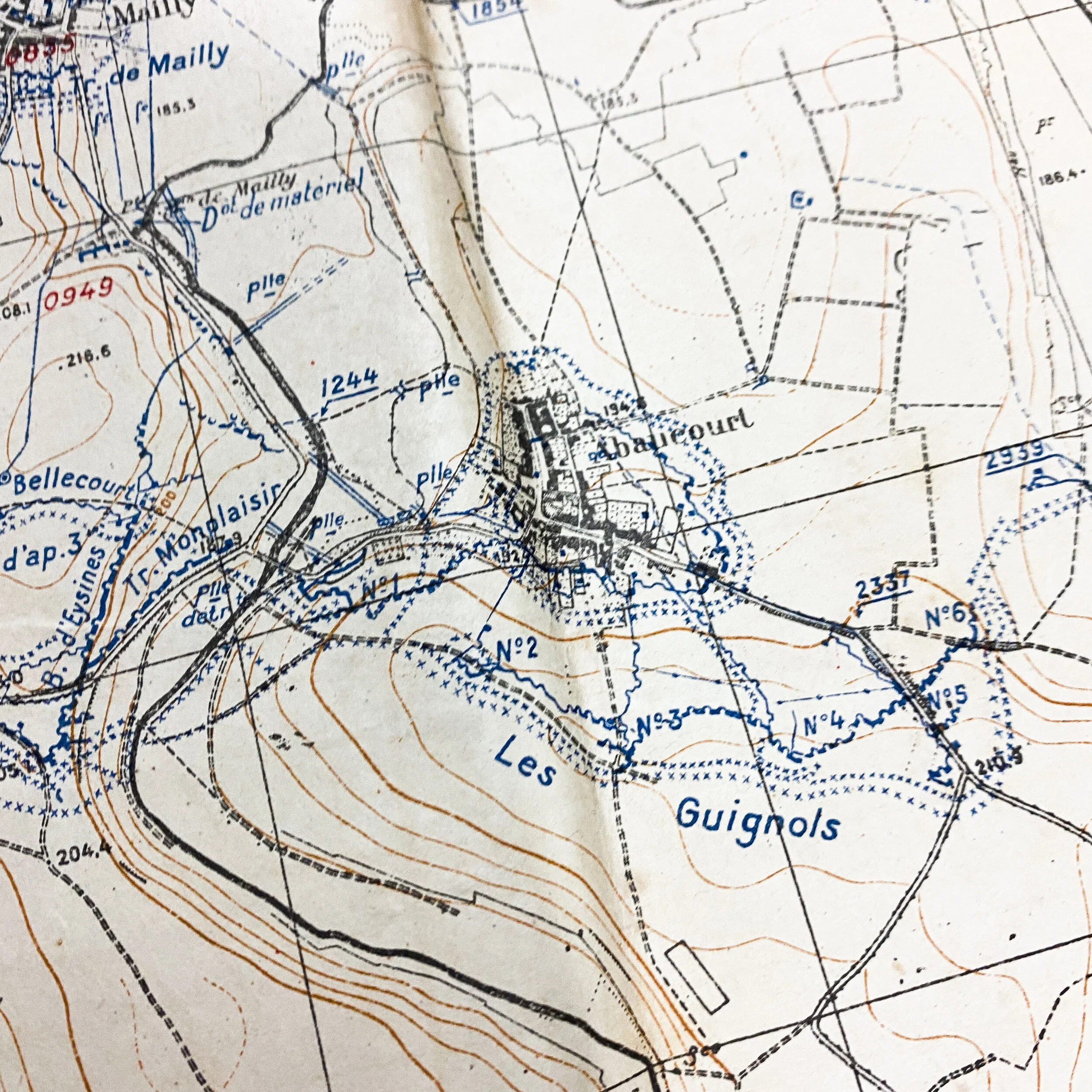

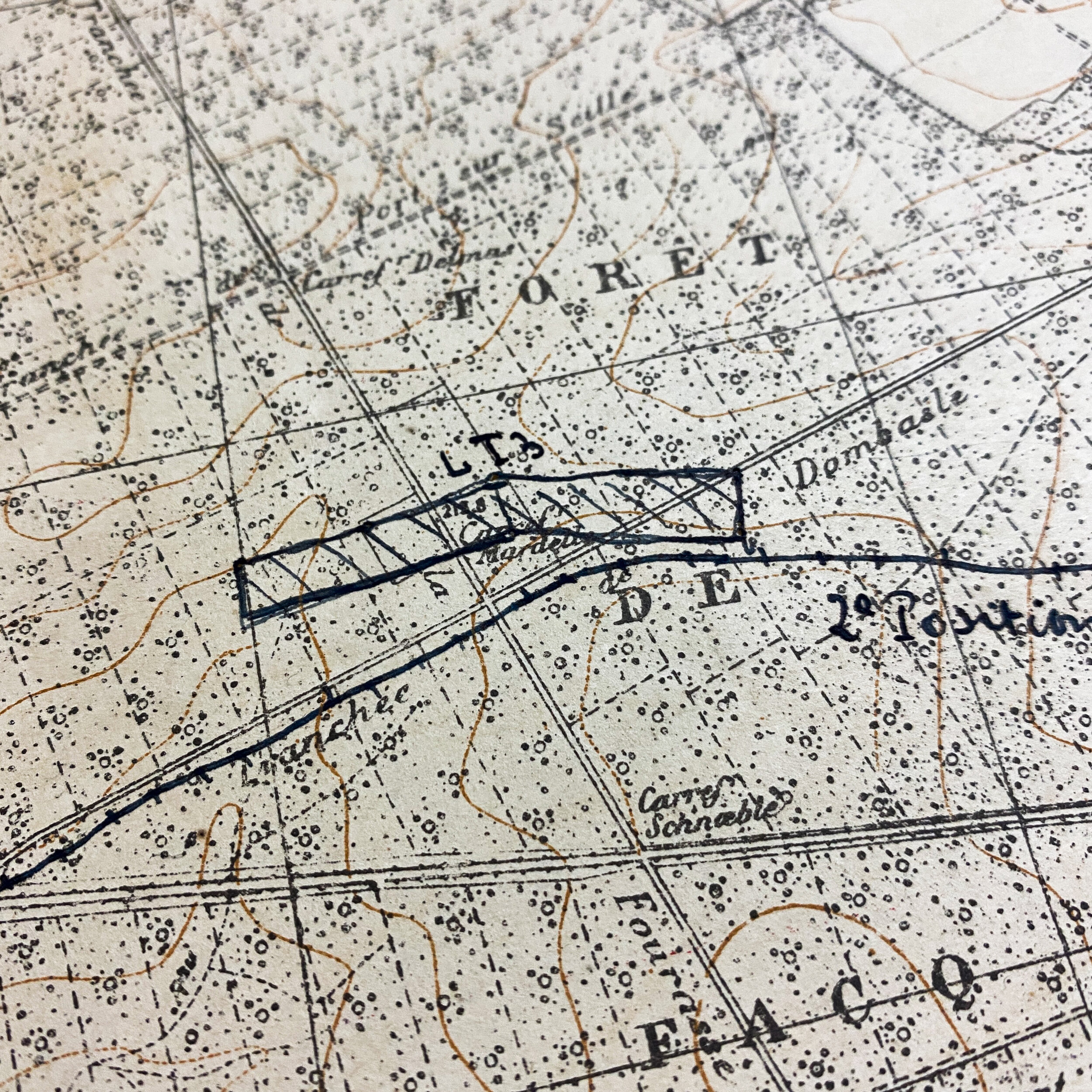
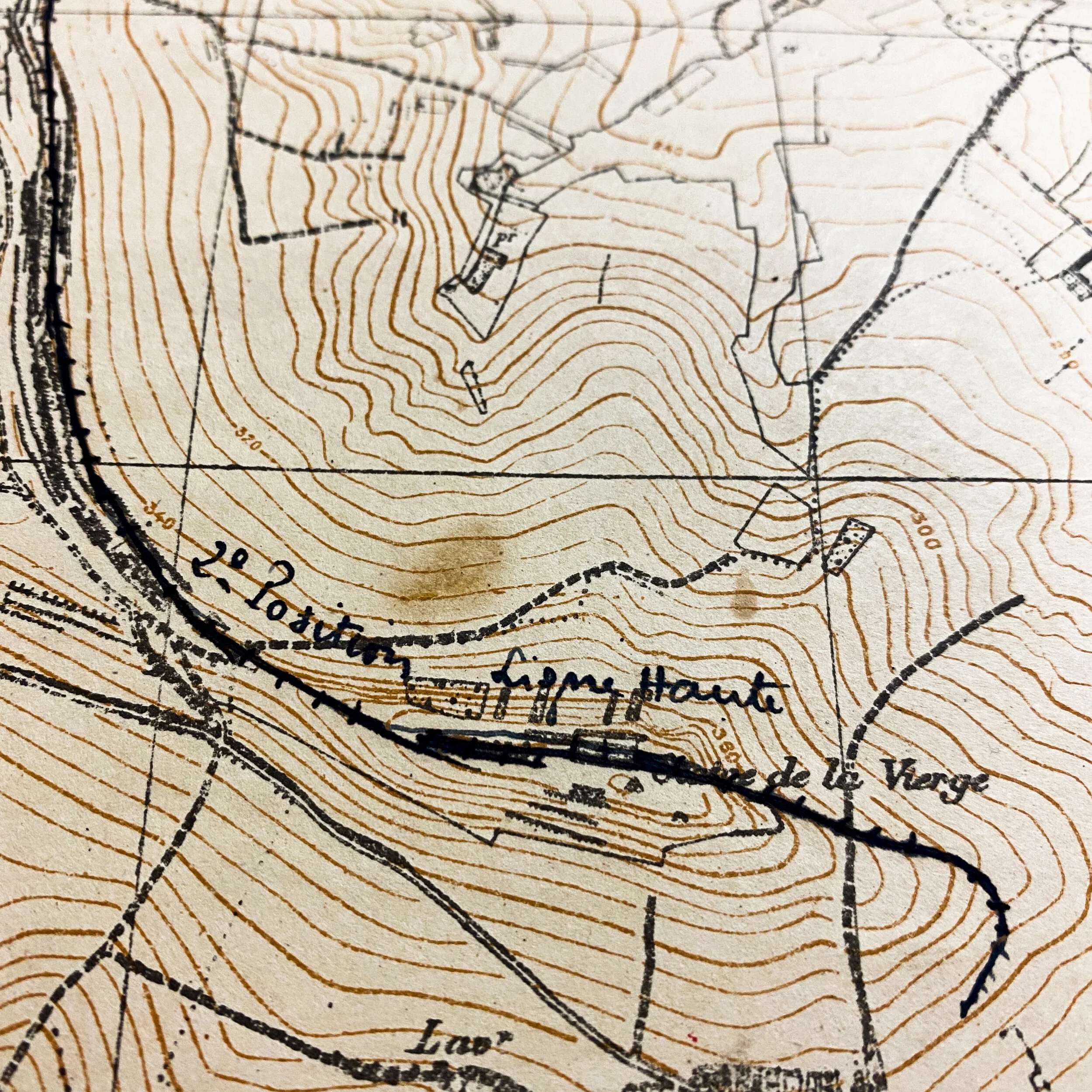
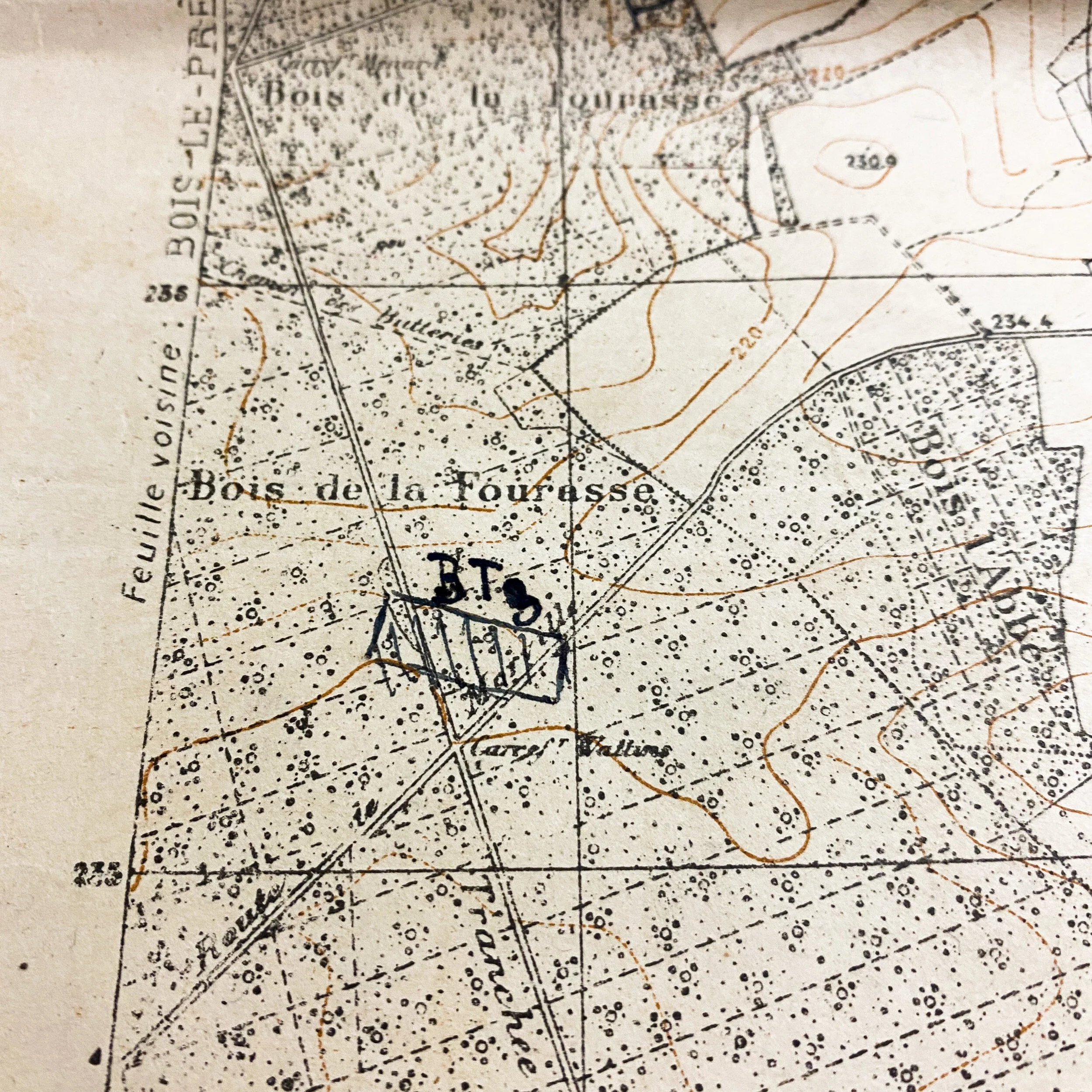

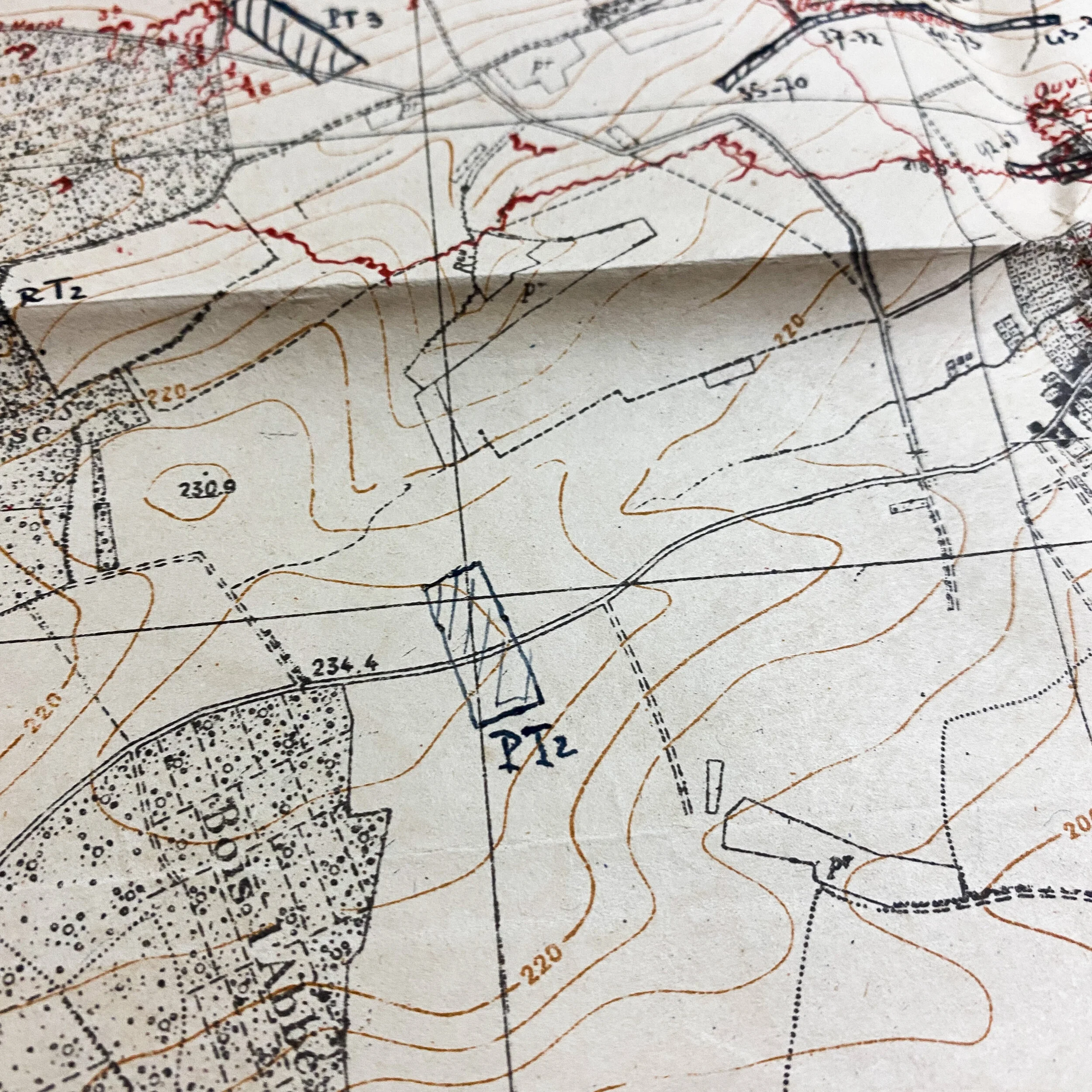

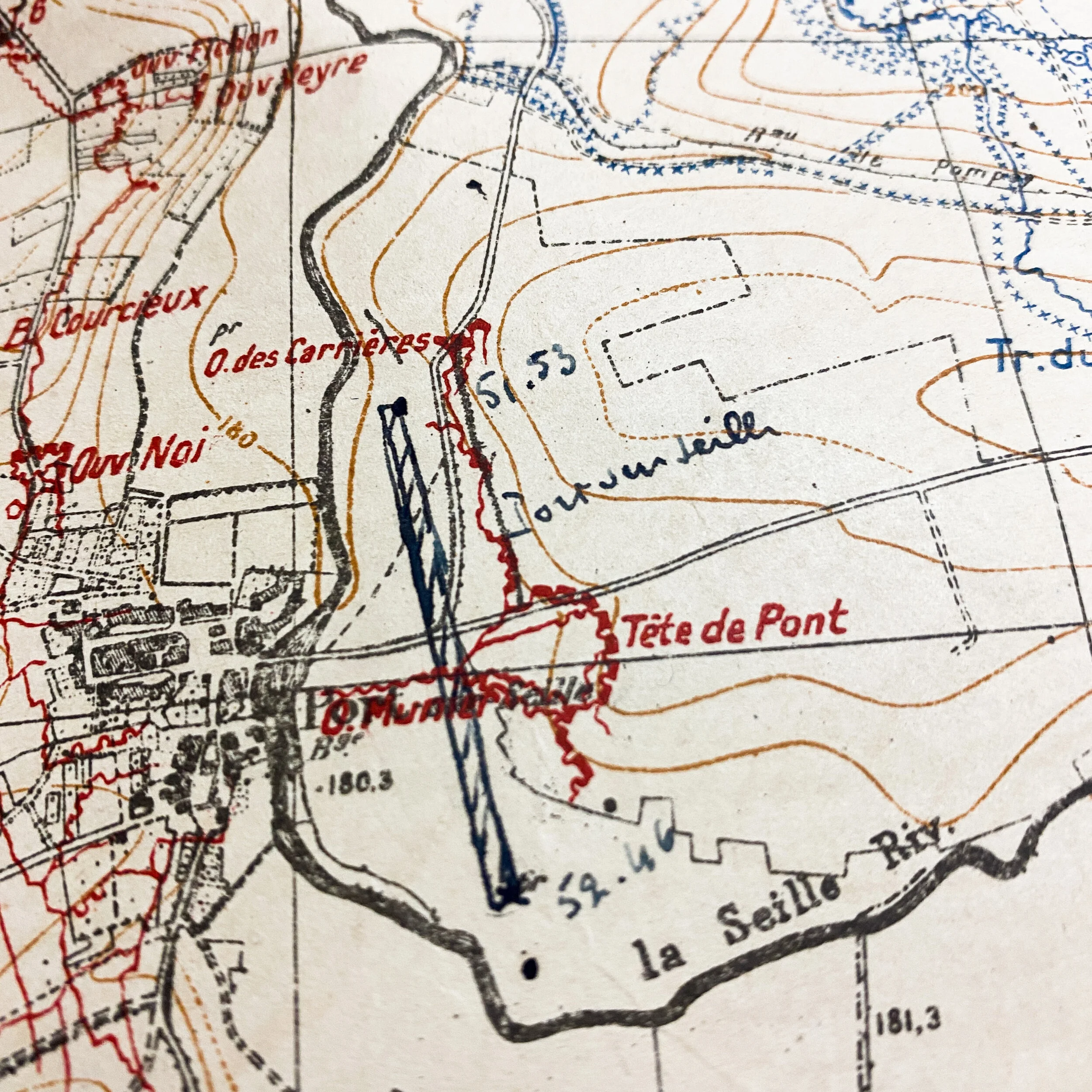
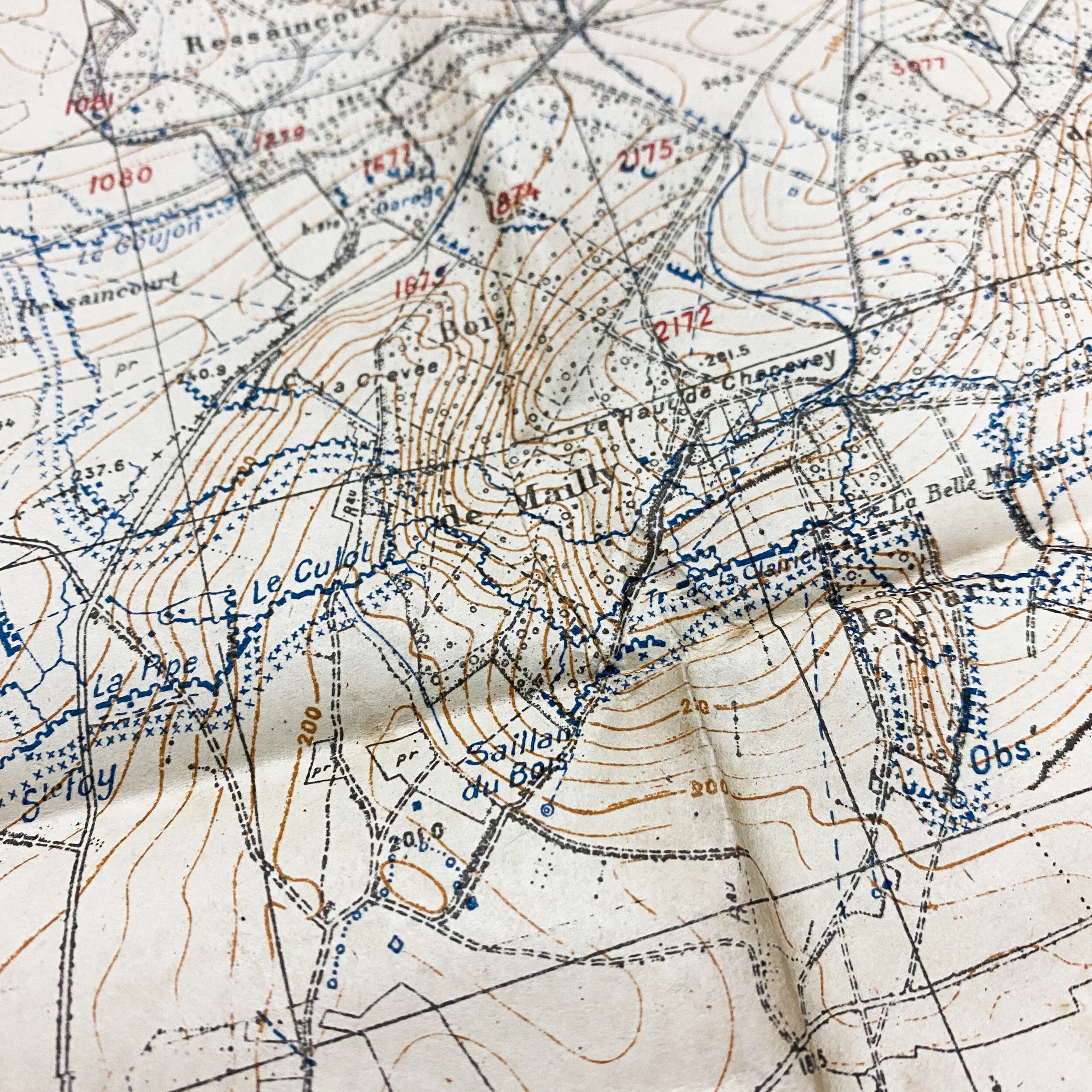

June 1918 Dated -Saint-Mihiel Offensive - A.E.F. Used French Artillery Map - "Nomeny - A" - 1st Lieut.. E. V. McKey Jr. - 134th Field Artillery
Size: 42.5 x 29.5 inches
This World War 1 French printed trench map is updated and revised with the most updated German trenches as of ‘9 Juin 1918’ or June 9th, 1918. Titled “Nomeny - A”, this map shows the geographical landscape of the area held by Germans during the final Allied offensive of 1918 or also known as the Battle of Saint-Mihiel. This major World War I battle was fought beginning in September of 1918, involving the American Expeditionary Forces (AEF) and 110,000 French troops under the command of General John J. Pershing of the United States against German positions. This battle marked the first use of the terms "D-Day" and "H-Hour" by the Americans. This map would have been similar to those used in the planning of attack in the area, divisional movements, as well as artillery fire support. For the added assistance of artillery firing coordinates, a transparent overlay of fine paper would have most likely been placed over this map and written on with H+ hours and firing lines ordered by headquarters. This map shows important villages and towns such as Nomeny, Abaicourt, Morville, and Raucourt. This is in the same sector where 1st Lieut.. E. V. McKey Jr. and the 134th Field Artillery provided extensive fire support and artillery barrages during the St. Mihiel offensive.
What makes this map so rare are the fountain pen drawings and handwritten annotations seen heavily drawn and written on the left side. These pen marks and annotation show positions of troops and a movement throughout the sector. It also shows incredibly detailed artillery barrage firing locations seen in a draw and shaded arch pattern, similar to those seen on other WWI artillery draw on maps. This writing makes the maps an extremely important part of World War I history and the infamous St. Mihiel offensive.
In mid-July, the bulk of American divisions was concentrated on two sectors. One was an active portion of the front in Champagne, near Château-Thierry. The other was a quiet sector in the Woëvre Plain area, extending from Nomeny, east of the Moselle River, to a point north of the German-occupied town of St. Mihiel. The AEF stationed its newer, not yet fully combat-ready divisions there to acclimate them to frontline conditions. The sector also provided an area where units fresh from combat could reconstitute and absorb replacements. The concentration of forces in these two regions enabled American corps headquarters, such as Maj. Gen. Hunter Liggett’s I Army Corps and Maj. Gen. Robert L. Bullard’s III Army Corps, to gain experience exercising tactical and administrative control over multiple divisions. Although these corps still required more training and experience in combined arms operations as well as staff planning and execution, Pershing’s goal was to use the corps and their divisions as the base upon which to form an American field army.
Collection: 1st Lieut.. E. V. McKey Jr. and the 134th Field Artillery.
This exclusive collection of World War I maps are from the bring back collection of 1st Lieut. E. V. McKey Jr. who was an A.E.F. artilleryman and saw extensive combat over the course of WWI serving valiantly with the 37th Infantry Division - 62nd Field Artillery Brigade -134th Field Artillery Regiment. The 62d Field Artillery Brigade - 134th Field Artillery is accredited battle participations in the Marbache sector where they provided extensive fire support and artillery barrages during the Meuse-Argonne offensive as well as the Thiaucourt sector during the St. Mihiel offensive. Many of these maps were used directly by the 1st Lieut. E. V. McKey Jr. and his men of the 134th Field Artillery as they provided offensive and defensive fire support for the Allies with their 75 mm cannons. The 62nd Field Artillery Brigade is one of the most infamous field artillery units of World War.
Saint-Mihiel Offensive:
The Saint-Mihiel offensive began on September 12th with a threefold assault on the salient. The main attack was made against the south face by two American corps. On the right was the I Corps (from right to left the 82nd, 90th, 5th, and 2nd Divisions in line with the 78th in reserve) covering a front from Pont-à-Mousson on the Moselle west toward Limey; on the left, the IV Corps (from right to left the 89th, 42d, and 1st Divisions in line with the 3rd in reserve) extending along a front from Limey west toward Marvoisin. A secondary thrust was carried out against the west face along the heights of the Meuse, from Mouilly north to Haudimont, by the V Corps (from right to left the 26th Division, the French 15th Colonial Division, and the 8th Brigade, 4th Division in line with the rest of the 4th in reserve). A holding attack against the apex, to keep the enemy in the salient, was made by the French II Colonial Corps (from right to left the French 39th Colonial Division, the French 26th Division, and the French 2nd Cavalry Division in line). In First Army reserve were the American 35th, 80th, and 91st Divisions.
The American V Corps location was at the northwestern vertices, the II French Colonial Corps at the southern apex, and the American IV and I Corps at the southeastern vertices of the salient. Furthermore, General Pershing's intent was obvious; to envelop the salient by using the main enveloping thrusts of the attack against the weak vertices. The remaining forces would then advance on a broad front toward Metz. This pincer action, by the IV and V Corps, was to drive the attack into the salient and to link the friendly forces at the French village of Vigneulles, while the II French Colonial Corps kept the remaining Germans tied down. The French II Colonial Corps were successful in the attack on the apex and entered Saint-Mihiel on 15 September 1918, taking 4000 prisoners. They then pushed into the plain of Woëvre up to Haumont-Woël-Doncourt.
The Allies mobilized 1,481 aircraft to provide air superiority and close air support over the front. About 40% were American-flown in American units, the remainder were British, French, and Italian. Nine bomber squadrons of the British RAF, although provided for the battle, were not under Pershing's operational control.
Defending the salient was German "Army Detachment C", consisting of eight divisions and a brigade in the line and about two divisions in reserve. Now desperately short of manpower, they had begun a step-by-step withdrawal from the salient only the day before the offensive began.
Pershing's plan had tanks supporting the advancing infantry, with two tank companies interspersed into a depth of at least three lines, and a third tank company in reserve. The result of the detailed planning was an almost unopposed assault into the salient. The American I Corps reached its first day's objective before noon, and the second day's objective by late afternoon of the second. The attack went so well on 12 September that Pershing ordered a speedup in the offensive. By the morning of 13 September, the 1st Division, advancing from the east, joined up with the 26th Division, moving in from the west, and before evening all objectives in the salient had been captured. At this point, Pershing halted further advances so that American units could be withdrawn for the coming Meuse-Argonne Offensive.